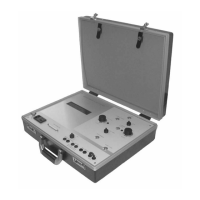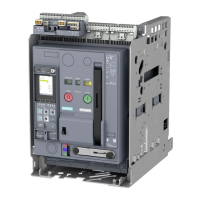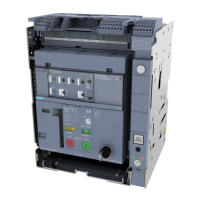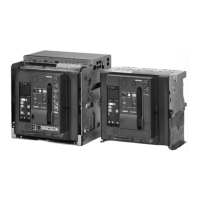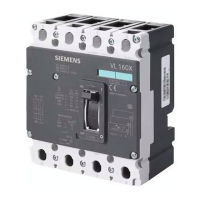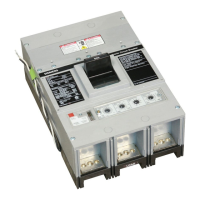Application planning
4.2 Power supply, grounding, and connection
3VA27 molded case circuit breakers & 3WL10 air circuit breakers
150 Manual, 10/2018, L1V30499596002-01
Power supply, grounding, and connection
The circuit breaker can be powered through the main circuit connection terminals. The
electronic trip unit is therefore self-powered in all phases via internal current transformers in
compliance with the standard to ensure its protection function without additional conditions in
the event of a fault.
Even if, with open main contacts, the electronic components ETU, metering function, and CB
bus modules are operated or protection functions, such as MCR or G_ret are activated (e.g.
for communication of circuit breaker status, applied line voltage signal etc.), these
components can be externally powered via the auxiliary voltage.
The external power supply can be achieved in two ways:
● The Breaker Connect module is mainly used for this and the auxiliary power supply of the
control panel can be connected directly to it. The auxiliary power supply is always
necessary for the communication function.
● As a further option, the MF Advanced metering module can be used. If the voltage is
tapped internally on the line side with the contacts open, this can also be used to power
the electronics directly and independently.
If a metering module is present, the voltage taps must be installed on the line side. In the
circuit breaker OPEN position, this also ensures that all relevant information is available.
Cables and busbars and connection methods
The connection bars and cables can be connected directly to the air circuit breaker.
The cables and busbars can be made of the following materials:
● Copper
● Silver-plated copper
● Zink-plated aluminum if the main distribution system is made of aluminum.
The following connection methods can be used (see also Chapter Accessories for
connection and insulation (Page 93)):
● For fixed-mounted breakers:
– Front terminals for busbars, cable lugs, and cables
– Rear terminals for busbars, cable lugs, and cables
● For withdrawable breakers:
– Front terminals for busbars and cable lugs
– Rear terminals for busbars and cable lugs
The possible combinations of cables/busbars and connection methods are shown in the
following table:

